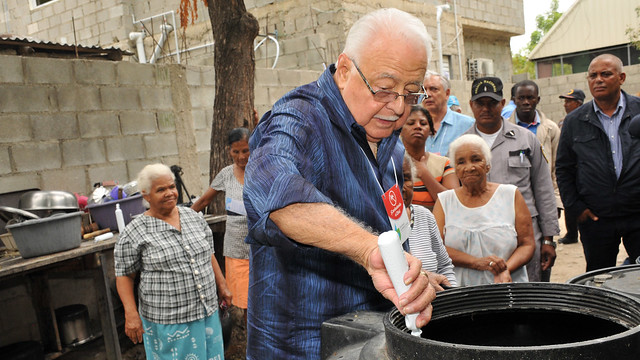When the Zika virus first appeared in Brazil and spread quickly through Latin America, dozens of governments and partners grappled with how to help families protect themselves from the mosquito that transmits Zika (as well as dengue, chikungunya and yellow fever).
Organizations and country governments leapt into action to provide Zika awareness and prevention information. But with few opportunities to coordinate, more than 30 behaviors were being promoted as ways to prevent the virus – far too many for people to follow, hindering social and behavior change efforts.
That’s when the Johns Hopkins Center for Communication Programs’ Breakthrough ACTION and the Breakthrough RESEARCH projects – funded by USAID – came together to develop a shorter, common set of recommended behaviors with the greatest potential to reduce Zika transmission. The result was the Zika Prevention Matrix which prioritized the most promising evidence-based prevention behaviors.
The effort to prioritize prevention behaviors is outlined in the September issue of Global Health: Science and Practice, a journal published by CCP’s Knowledge SUCCESS project.
“With so many behaviors being recommended, and potentially contradictory messages being promoted, there was a fear of confusion in the general public,” says Alice Payne Merritt, MPH, CCP’s deputy director and one of three CCP authors of the new study. “With so many messages, families might wonder where to focus their attention and efforts. It was imperative for social and behavior change partners to speak with one voice and promote a harmonized set of behaviors to increase the likelihood that these behaviors were adopted correctly and that the spread of the disease would be halted.”
The first outbreak of Zika in the Americas was detected in 2015, with a spike in serious neurological complications in babies born to mothers infected with the virus. As many as eight in 10 infections are asymptomatic, meaning people don’t know they have been infected. By the summer of 2017, the study’s authors note, there were approximately 217,000 confirmed cases of Zika and 3,400 cases of Zika-related neurological abnormalities.
The Zika virus is unique in that is spread both by the Aedes aegypti mosquito and sexual contact.
After reviewing social and behavior change messages being shared in Latin America to combat Zika, more than 30 prevention messages were identified. “When too many preventive behaviors are promoted or messages lack precision, adopting prevention behaviors can be inhibited or done in a way that is either ineffective or counterproductive,” the authors note.
The Zika Prevention Matrix was created by synthesizing existing research into the transmission of arboviruses similar to Zika and into other sexually transmitted infections. The partners worked together to tailor a set of preventive behaviors that had the greatest potential to succeed, identify specific target audiences and design a process to implement their work in the most feasible way.
Based on the evidence and feasibility of carrying out behaviors, the team came up with seven to focus on:
- Use mosquito repellent (DEET, Picaridin, IR3535 and eucalyptus lemon oil only)
- Use condom to prevent sexual transmission of Zika during pregnancy
- Regularly remove unintentional standing water both inside and outside of the house, and in communal areas
- Cover water storage containers at all times with a cover that is tight fitting and does not warp or touch the water
- Eliminate mosquito eggs from the walls of frequently used water storage containers weekly
- Attend prenatal check-ups to monitor the pregnancy and learn about the risk of contracting Zika and how to prevent it
- Seek counseling from a trained provider about modern family planning methods if you do not plan to become pregnant
These messages were shared through mass and social media, community engagement and household visits. Outreach workers were trained in interpersonal communication skills to ensure the correct behaviors – and the best way to adopt them – were communicated with individuals and their families.
“This process can identify and select behaviors with the most potential to reduce transmission, is designed to be adapted to local contexts, and is flexible and based on consensus building with local and international stakeholders,” the authors conclude.
“Our experience developing this process provides a potential model for future public health emergencies, as it highlights a way forward in prioritizing behaviors … in situations where direct evidence is limited or absent, time is constrained, and there are many stakeholders.”
The research was led by the Population Council, with CCP, USAID and Tulane University contributing. “Evidence-Based Process for Prioritizing Positive Behaviors for Promotion: Zika Prevention in Latin America and the Caribbean and Applicability to Future Health Emergency Responses” was written by Jessie Pinchoff, Arianna Serino, Alice Payne Merritt, Gabrielle Hunter, Martha Silva, Priya Parikh and Paul C. Hewett.





